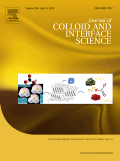
JOURNAL OF COLLOID AND INTERFACE SCIENCE
Scope & Guideline
Unveiling the Complexities of Particle Interactions
Introduction
Aims and Scopes
- Colloid Chemistry:
Research in this area examines the stability, interactions, and properties of colloidal systems, including emulsions, suspensions, and foams. The journal publishes studies that explore the formation, stabilization, and applications of colloids in various industries. - Nanotechnology and Nanomaterials:
This scope covers the synthesis, characterization, and application of nanomaterials, particularly their behavior at interfaces. The journal highlights innovative nanostructured materials for applications in catalysis, sensing, and energy storage. - Surface and Interface Science:
Research that investigates the physical and chemical interactions at solid-liquid, liquid-liquid, and solid-gas interfaces. This includes studies on surface modifications, adsorption phenomena, and the role of interfaces in various processes. - Environmental Applications:
The journal explores the application of colloid and interface science in environmental remediation, including the removal of pollutants and the development of sustainable materials and processes. - Biomedical Applications:
Research focused on the use of colloidal systems in drug delivery, imaging, and therapeutic applications. This includes studies on the interaction of nanoparticles with biological systems and the development of biocompatible materials. - Interfacial Phenomena:
This area encompasses studies that investigate the dynamics and thermodynamics of interfaces, including phenomena such as wetting, spreading, and adsorption.
Trending and Emerging
- Sustainable Materials and Green Chemistry:
There is a growing focus on the development of eco-friendly materials and processes, including biodegradable polymers and sustainable nanomaterials. Research in this area is increasingly relevant to address environmental concerns. - Smart and Responsive Materials:
Research on materials that respond to external stimuli (e.g., temperature, pH, light) is on the rise. This includes the development of smart hydrogels and nanocarriers for drug delivery and other applications. - Electrocatalysis and Energy Storage:
Emerging research on electrocatalytic processes for energy conversion and storage, particularly in the context of renewable energy applications, is becoming more prominent. This includes studies on advanced battery technologies and photocatalytic systems. - Nanomedicine and Targeted Drug Delivery:
Research related to the use of nanotechnology in biomedical applications, particularly in targeted drug delivery systems and imaging, is rapidly growing. This reflects an increasing interest in personalized medicine and therapeutic efficacy. - Interface Engineering and Functionalization:
There is an increasing emphasis on engineering surfaces and interfaces to enhance the functionality of materials. This includes studies on modifying surfaces to improve adhesion, catalysis, and stability. - Micro- and Nano-Scale Interactions:
Research focusing on the interactions at the micro- and nano-scale, including colloidal stability and behavior, is gaining importance, particularly in the context of complex fluids and biological systems.
Declining or Waning
- Traditional Emulsification Techniques:
There has been a noticeable decrease in publications related to conventional emulsification methods, as newer, more efficient techniques are developed. Research is increasingly focusing on advanced emulsification strategies that leverage nanotechnology. - Basic Theoretical Studies:
The journal has seen fewer submissions of purely theoretical papers in colloid science, as researchers are now more inclined to publish experimental studies or those that combine theory with practical applications. - Surface Tension Measurements:
Research focused solely on measuring surface tension has waned, with more emphasis being placed on understanding dynamic interfacial phenomena and their implications in real-world applications. - Low-Impact Environmental Studies:
There appears to be a reduction in studies that do not address significant environmental challenges, as the journal shifts toward more impactful research that combines colloid science with broader environmental issues.
Similar Journals
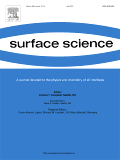
SURFACE SCIENCE
Pioneering Research in Surface PropertiesSURFACE SCIENCE is a prominent journal in the fields of Condensed Matter Physics, Materials Chemistry, and Surface Engineering, published by Elsevier in the Netherlands. With an ISSN of 0039-6028 and an E-ISSN of 1879-2758, the journal encompasses a wide range of research related to the physical and chemical properties of surfaces and interfaces, serving as a valuable resource for researchers, professionals, and students alike. As of 2023, it holds a Q3 ranking across multiple categories, indicating its significant contribution to its respective fields, despite room for improvement in its overall impact within the scientific community. Researchers will find that SURFACE SCIENCE provides a platform for innovative and interdisciplinary studies, making it essential for those looking to stay updated on emerging trends and technologies in surface science. While the journal is currently not open access, its reputation and robust indexing reinforce its importance in advancing scientific knowledge and fostering new discoveries.

Surfaces
Unveiling the Dynamics of Surfaces and InterfacesSurfaces is an esteemed academic journal published by MDPI in Switzerland, operating as an open access platform since 2018. With an E-ISSN of 2571-9637, this journal focuses on the interdisciplinary advancements in the fields of chemistry, materials science, and physics, particularly in the domain of surfaces and interfaces. As a testament to its scholarly impact, Surfaces is ranked in the second quartile for multiple categories as of 2023, including Chemistry (miscellaneous), Materials Science (miscellaneous), Surfaces and Interfaces, as well as Surfaces, Coatings and Films, showcasing its relevance within these disciplines. Researchers and professionals seeking to disseminate and acquire knowledge on the latest innovations can benefit from the journal's rigorous peer-review process and commitment to quality, ensuring visibility and accessibility for current developments in surface technology and material interactions. With a growing archive from 2019 to 2024, Surfaces stands out as a vital resource for the academic community.

Colloids and Interfaces
Innovating Connections in Surface ChemistryColloids and Interfaces is a cutting-edge open access journal published by MDPI based in Switzerland, focusing on innovative research in the fields of colloid and surface chemistry. Established in 2017, this journal has quickly become a significant platform for sharing critical insights and advancements within the discipline, maintaining a commendable impact factor that reflects its scholarly importance. With a Q2 ranking in miscellaneous chemistry and a Q3 rank in colloid and surface chemistry, it stands as a vital resource for researchers and professionals dedicated to the study of colloidal phenomena. The journal's open access policy, initiated in 2018, ensures that findings are readily available to a global audience, fostering collaboration and innovation. As it continues to converge research until 2024, Colloids and Interfaces is positioned to further enhance the burgeoning field of colloidal science.

Frontiers of Materials Science
Bridging Academia and Industry through Materials InnovationFrontiers of Materials Science is a groundbreaking journal dedicated to exploring advanced materials and their applications within the ever-evolving landscape of materials science. Published by HIGHER EDUCATION PRESS, this journal offers a crucial platform for scholars and practitioners seeking to disseminate innovative research findings that foster interdisciplinary collaboration. Since its inception in 2011, the journal has enjoyed a notable Q2 ranking in the category of Materials Science (miscellaneous) as of 2023, positioning it among the noteworthy publications in the field with a Scopus rank of #222 out of 463. While predominantly published in China, the journal is committed to open access principles, allowing global accessibility to cutting-edge research. With its comprehensive coverage spanning materials synthesis, characterization, properties, and applications, Frontiers of Materials Science not only serves as a repository for academia but also bridges the gap between research and industry, making it an indispensable resource for researchers, professionals, and students alike.

Interdisciplinary Materials
Bridging Knowledge Gaps in Materials ResearchInterdisciplinary Materials is a prominent Open Access journal published by Wiley, dedicated to advancing knowledge and innovation in the field of materials science. With an ISSN of 2767-4401 and an E-ISSN of 2767-441X, this journal seeks to foster interdisciplinary collaborations and promote high-quality research that bridges the gap between materials engineering, physics, chemistry, and emerging technologies. Established in 2022, it aims to provide free and unrestricted access to cutting-edge research findings, ensuring that pivotal discoveries reach a broad audience. Interdisciplinary Materials assesses submissions rigorously, aspiring to achieve high impact and relevance, catering to researchers, professionals, and students keen on exploring innovative materials and their applications. With its commitment to scientific excellence, this journal stands as a vital resource for those looking to stay abreast of the latest advancements in materials research.
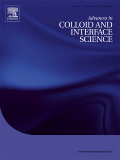
ADVANCES IN COLLOID AND INTERFACE SCIENCE
Leading the Charge in Colloid and Interface ResearchADVANCES IN COLLOID AND INTERFACE SCIENCE, published by Elsevier, stands as a premier journal in the disciplines of colloid and interface science, with an esteemed impact factor reflecting its influential research contributions. As a leader in its field, it holds an impressive Q1 ranking across multiple categories, including Colloid and Surface Chemistry, Physical and Theoretical Chemistry, as well as Surfaces and Interfaces. Established in 1967 and continuing its legacy through 2024, the journal provides a vital platform for dissemination of innovative findings and techniques in colloidal systems and interfacial phenomena. Researchers and professionals engaged in these areas will find a wealth of insights and advancements, given its high percentile rankings in Scopus that underscore its significance in both chemistry and physics. While the journal maintains a subscription-based model, it remains an essential resource for anyone looking to deepen their understanding of the complex interactions defining modern materials science.

SURFACE ENGINEERING AND APPLIED ELECTROCHEMISTRY
Transforming Surfaces, Empowering IndustriesSURFACE ENGINEERING AND APPLIED ELECTROCHEMISTRY, published by PLEIADES PUBLISHING INC, stands as a pivotal resource in the realms of engineering and materials science. With an ISSN of 1068-3755 and an E-ISSN of 1934-8002, this journal encompasses an extensive scope that includes industrial applications, and innovative surface treatments, fostering advancements in the fields of Industrial and Manufacturing Engineering, Surfaces, Coatings and Films, and Surfaces and Interfaces. Recognized for its contributions, it currently holds a Q3 classification in both Industrial and Manufacturing Engineering and Surfaces, Coatings and Films, alongside a Q4 ranking in Surfaces and Interfaces for the year 2023. Despite its competitive standings, the journal encourages inclusive dialogue and dissemination of research from a global community—making it an essential platform for researchers and professionals dedicated to surface technologies and applied electrochemistry. Potential contributors and readers can expect a comprehensive exploration of techniques and innovations, reinforcing the journal's commitment to bridging theory and practical application in these dynamic fields.
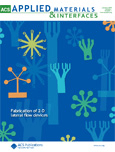
ACS Applied Materials & Interfaces
Advancing the Frontiers of Applied Materials and InterfacesACS Applied Materials & Interfaces, published by the American Chemical Society, stands as a leading journal in the field of applied materials, nanotechnology, and interdisciplinary research in medicine. With an impressive Impact Factor that places it in the Q1 category across Materials Science, Medicine, and Nanoscience and Nanotechnology, this journal consistently ranks among the top tier, evidencing its significance and influence in advancing scientific knowledge. The journal’s scopus ranking of 33 out of 463 in General Materials Science further underscores its critical role in disseminating innovative and high-quality research. Although it is not an open-access journal, a diverse range of access options is available, ensuring that vital research findings are accessible to a broad audience of researchers, professionals, and students. Targeting breakthroughs in the synthesis, characterization, and application of materials and interfaces, ACS Applied Materials & Interfaces serves as a pivotal platform for publishing cutting-edge studies essential for future technological advancements.

Advanced Materials Interfaces
Connecting Ideas, Innovating InterfacesAdvanced Materials Interfaces is a premier journal dedicated to the exploration and advancement of materials science, with particular emphasis on the interfacial phenomena that govern the behavior of materials in various engineering applications. Published by WILEY in the United Kingdom, this Open Access journal, established in 2014, has quickly ascended to a Q1 category ranking in both Mechanical Engineering and Mechanics of Materials as of 2023, reflecting its significant influence and excellence in the field. With impressive Scopus Ranks, such as #81 out of 672 in Mechanical Engineering and #58 out of 398 in Mechanics of Materials, it serves as a vital resource for researchers and practitioners aiming to push the boundaries of materials innovation. The journal provides unrestricted access to its cutting-edge research, promoting collaboration and dissemination of knowledge among the global scientific community, solidifying its role as a vital contributor to the ever-evolving landscape of materials engineering.
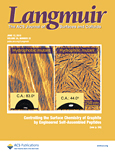
LANGMUIR
Illuminating the Path of Scientific Discovery Since 1985LANGMUIR is a prominent peer-reviewed journal published by the American Chemical Society, serving as a vital platform for research in various fields, including condensed matter physics, materials science, electrochemistry, and spectroscopy. With an ISSN of 0743-7463 and an E-ISSN of 1520-5827, this journal has established itself as a reputable source of cutting-edge scientific findings since its inception in 1985. Recognized for its rigorous academic standards, LANGMUIR holds significant ranking positions, including Q1 in condensed matter physics and spectroscopy, and Q2 categories in electrochemistry and materials science, reflecting its impactful contributions to these disciplines. Although the journal does not currently offer open access, it continues to foster collaboration and discussion among researchers by publishing high-quality articles that explore the frontiers of chemistry and physics. By engaging with LANGMUIR, readers can stay informed about the latest advances in surface and interface science, making it an essential resource for professionals, researchers, and students dedicated to these fields.